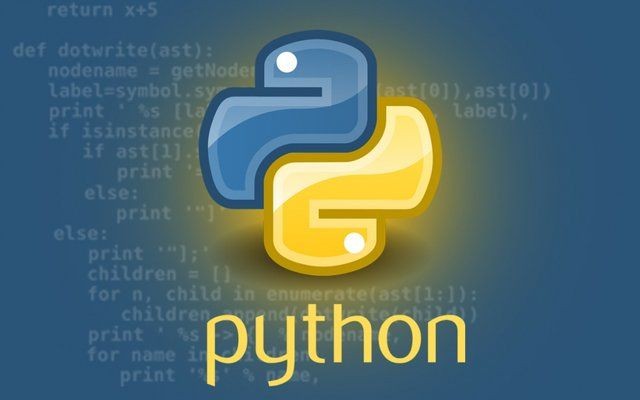Python Data Types and Data Structures for DevOps
In the dynamic landscape of DevOps, where efficiency and agility reign supreme, mastering the right tools is paramount. Enter Python, a versatile programming language that has captured the hearts of DevOps professionals worldwide. In this comprehensive guide, we’ll delve into the realm of Python data types and data structures and explore how they can empower DevOps practitioners to achieve new heights of productivity and innovation. Let’s embark on this journey of discovery together.
Python’s strength lies in its rich set of data types, which form the building blocks of any robust program. These data types facilitate the organization, manipulation, and storage of data, ensuring that DevOps workflows flow seamlessly. Let’s take a closer look at some key data types:
Lists: Your Dynamic Allies
Lists, denoted by square brackets, are versatile containers that can hold a mix of different data types. They offer flexibility and are ideal for managing collections of items. Whether it’s a list of server names, configuration settings, or deployment parameters, lists can streamline your tasks.
Dictionaries: Mapping Possibilities
Dictionaries, represented by curly braces, enable you to store data as key-value pairs. Think of them as mini-databases, allowing you to access values quickly based on their associated keys. In DevOps, dictionaries shine when managing configurations or storing metadata.
Strings: Gluing It All Together
Strings are sequences of characters enclosed in single or double quotes. They play a crucial role in handling text-based data, making them essential for tasks like log analysis, message formatting, and communication between components.
Sets: Uniqueness Matters
Sets are collections of unique elements enclosed in curly braces. They come in handy when you need to perform operations like deduplication or intersection. In DevOps pipelines, sets can be used to manage distinct configurations or filter out redundant data.
Numbers: Crunching the Data
Numbers in Python encompass integers and floating-point values. They’re the bedrock of mathematical operations and calculations, providing the foundation for metrics analysis, resource allocation, and performance optimization.
Leveraging Python Data Structures for DevOps Efficiency
While data types equip DevOps professionals with individual tools, data structures combine these tools to create more complex, efficient, and organized systems. Let’s explore some fundamental data structures:
Arrays: Ordered Collections
Arrays are sequences that hold elements of the same data type. They provide efficient indexing and slicing, making them invaluable for storing and accessing homogeneous data. In DevOps pipelines, arrays can store historical performance metrics or track resource usage over time.
Stacks: Last-In, First-Out (LIFO)
A stack is a linear data structure where the last element added is the first to be removed. This behavior, known as Last-In, First-Out (LIFO), is useful for tasks like tracking execution order or managing deployment rollbacks.
Queues: First-In, First-Out (FIFO)
In contrast to stacks, queues operate on a First-In, First-Out (FIFO) principle. The element added first is the first to be removed. DevOps teams can utilize queues for managing incoming requests, processing tasks in a structured manner, or orchestrating workflows.
Linked Lists: Flexibility Unleashed
Linked lists consist of nodes, each holding data and a reference to the next node. They offer dynamic memory allocation, enabling efficient insertion and deletion of elements. Linked lists are beneficial for DevOps scenarios that involve dynamic data updates or complex data structures.
Trees: Hierarchical Structures
Trees are hierarchical structures with a root node and child nodes connected by edges. They’re used to represent hierarchical relationships in data. In DevOps, trees can model infrastructure configurations, network topologies, or dependencies between components.
Frequently Asked Questions (FAQs)
How can Python data types enhance my DevOps workflows?
Python data types provide a streamlined way to manage and manipulate various kinds of data within DevOps pipelines. Lists, dictionaries, strings, sets, and numbers offer versatility and efficiency, ensuring smoother data handling and analysis.
Are data structures essential for DevOps tasks?
Absolutely. Data structures like arrays, stacks, queues, linked lists, and trees enable DevOps professionals to create well-organized, efficient systems. These structures allow for optimized data storage, retrieval, and manipulation, enhancing overall workflow efficiency.
Can I mix different data types in a single list?
Yes, Python lists can hold a mix of different data types. This flexibility is advantageous for DevOps tasks that involve managing diverse data, such as configuration settings or deployment parameters.
How do dictionaries improve configuration management?
Dictionaries allow you to store data as key-value pairs, enabling efficient retrieval and update of configuration settings. DevOps practitioners can use dictionaries to manage complex configurations for various components and services.
What advantages do sets offer in DevOps pipelines?
Sets excel at managing unique elements and performing set operations like union, intersection, and difference. In DevOps pipelines, sets can be employed to handle distinct configurations, identify redundant data, or manage resource allocation efficiently.
How do trees represent dependencies in DevOps?
Trees provide a hierarchical representation that mirrors dependency relationships between different components or services. DevOps teams can use trees to visualize and manage complex dependencies, aiding in efficient orchestration and troubleshooting.
Conclusion
In the realm of DevOps, Python proves to be a steadfast ally through its diverse data types and powerful data structures. These tools empower professionals to streamline workflows, optimize resource usage, and enhance overall efficiency. As you embark on your DevOps journey, consider harnessing the magic of Python data types and data structures to unlock new realms of success and innovation. So, dive in, experiment, and witness the transformation firsthand as you merge the world of coding with the art of operational excellence.
SOURCEBAE: HIRE REACT DEVELOPER






